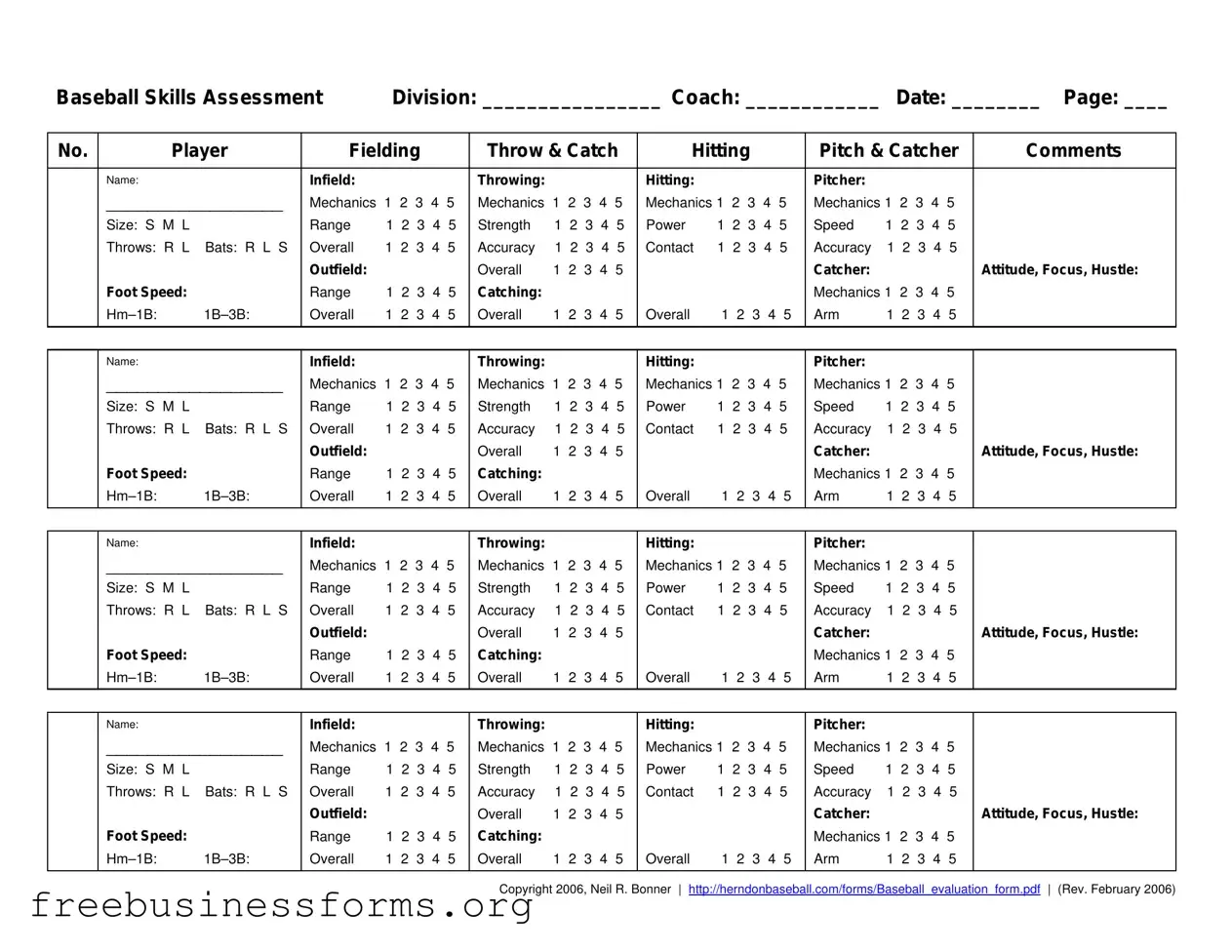|
T im e |
Ac t ivity |
|
|
5 min. |
Opening remarks by All-Star manager and/or tryouts coach. |
|
0:05 |
Explain format of tryouts, how players will be evaluated, and |
|
|
importance of behavior, hustle and good attitude. |
|
10 min. |
Warm up. Jog once around entire field, then warm-up by throwing |
|
0:15 |
to a partner. |
|
10 min. |
Base Running skills. Lineup players at home plate. Time players |
|
0:25 |
on their ability to go from the batter’s box to 1B. Afterwards, have |
|
|
them run from 1B to 3B. Allow them to overrun 3B as you don’t |
|
|
want them to slide into 3B. Make sure players tag each base. Use a |
|
|
stopwatch to call out times. |
|
20 min. |
Infield skills. Lineup players in outfield just behind the shortstop. |
|
0:45 |
Each player rotates through the positions starting with shortstop. |
|
|
Coach hits five balls to shortstop who fields and makes a throw to |
|
|
1B. Hit balls to left and right to evaluate range. Then hit one ball to |
|
|
2Bman who throws it to the shortstop who then throws to 1B for a |
|
|
double play. Players then rotate from SS to 2B to 1B to home. |
|
5 min. |
Water break. Have players return to dugout for a quick break. |
|
25 min. |
Outfield skills. Lineup players in deep outfield. If using a pitching |
|
1:15 |
machine to simulate flyballs, have four small cones setup in a |
|
|
square approximately 50 feet apart. Have the player start in the |
|
|
center of the square. The flyball should come right to him. He then |
|
|
rotates to each cone position and moves once the ball is “hit”. This |
|
|
will test his range and the ability to catch. After each ball the player |
|
|
throws the ball to 2B who throws it to 3B who throws it to the |
|
|
player at home. Players rotate from OF to 2B to 3B to home. |
|
5 min. |
Water break. Have players return to dugout for a quick break. |
|
35 min. |
Hitting skills. Have about 1/3 of the players in the dugout ready to |
|
1:55 |
hit. The other players field the batted balls. Rotate players as |
|
|
needed. Recommend using pitching machine for consistency unless |
|
|
several coaches with good pitching skills are available to throw |
|
|
“batting practice” balls to each player. Give each player 5 to 8 good |
|
|
pitches. Bunting first pitch is optional. |
|
5 min. |
Thank You. Have manager thank all players for attending the |
|
2:00 |
tryouts. Let them know when a decision will be made regarding |
|
|
who makes the team. Let them know that anyone not interested in |
|
|
trying out as a pitcher or catcher may be dismissed. |
|
20 min. |
Pitchers & Catchers. Any player that would like to be considered |
|
2:20 |
as a pitcher or catcher should tryout. Have pitchers throw |
|
|
approximately 5 pitches. Catchers should catch at least two pitchers. |

